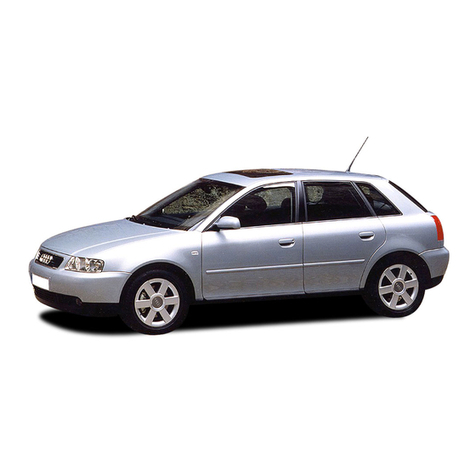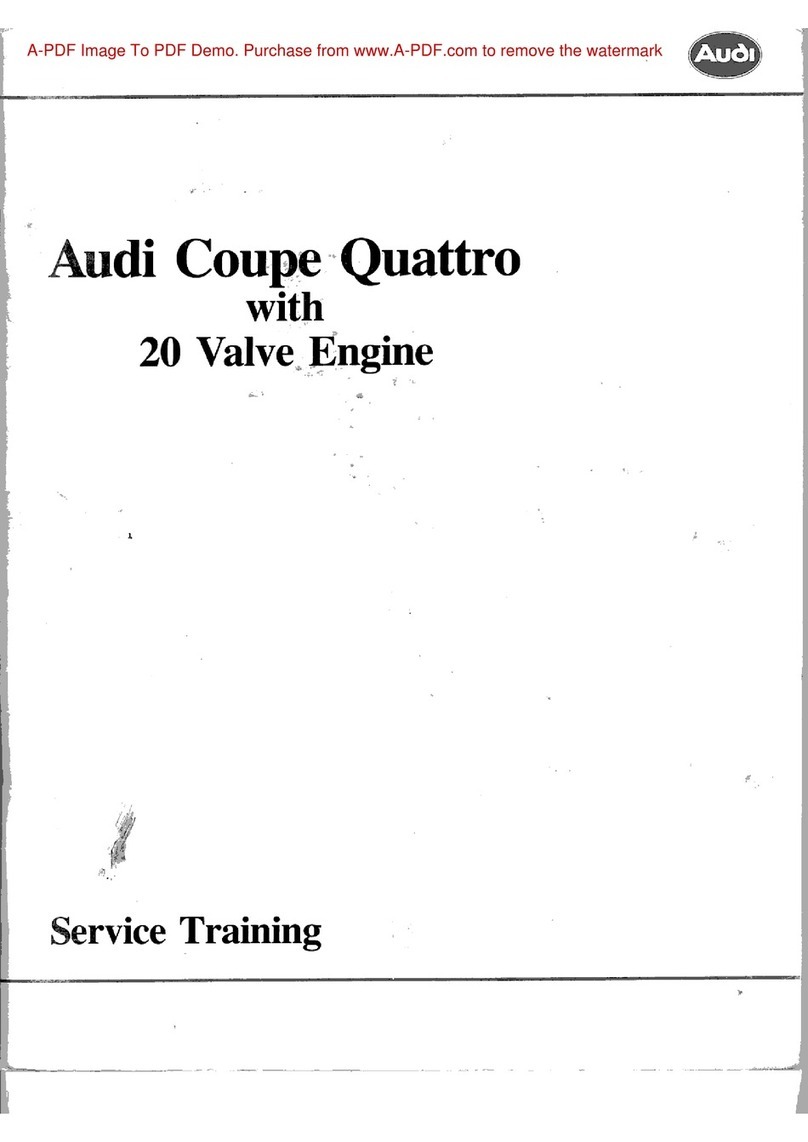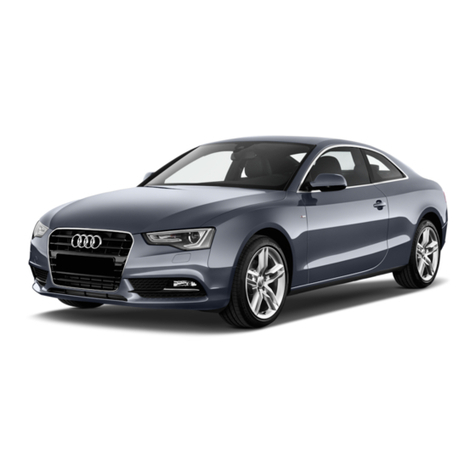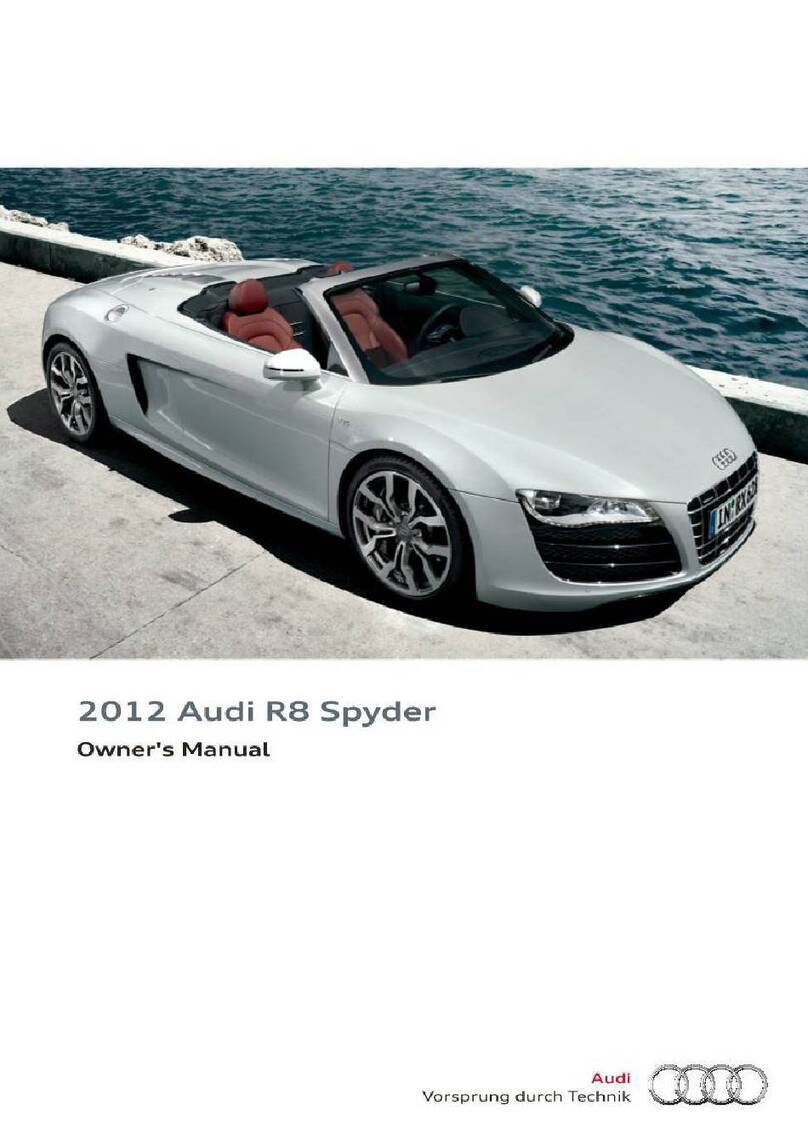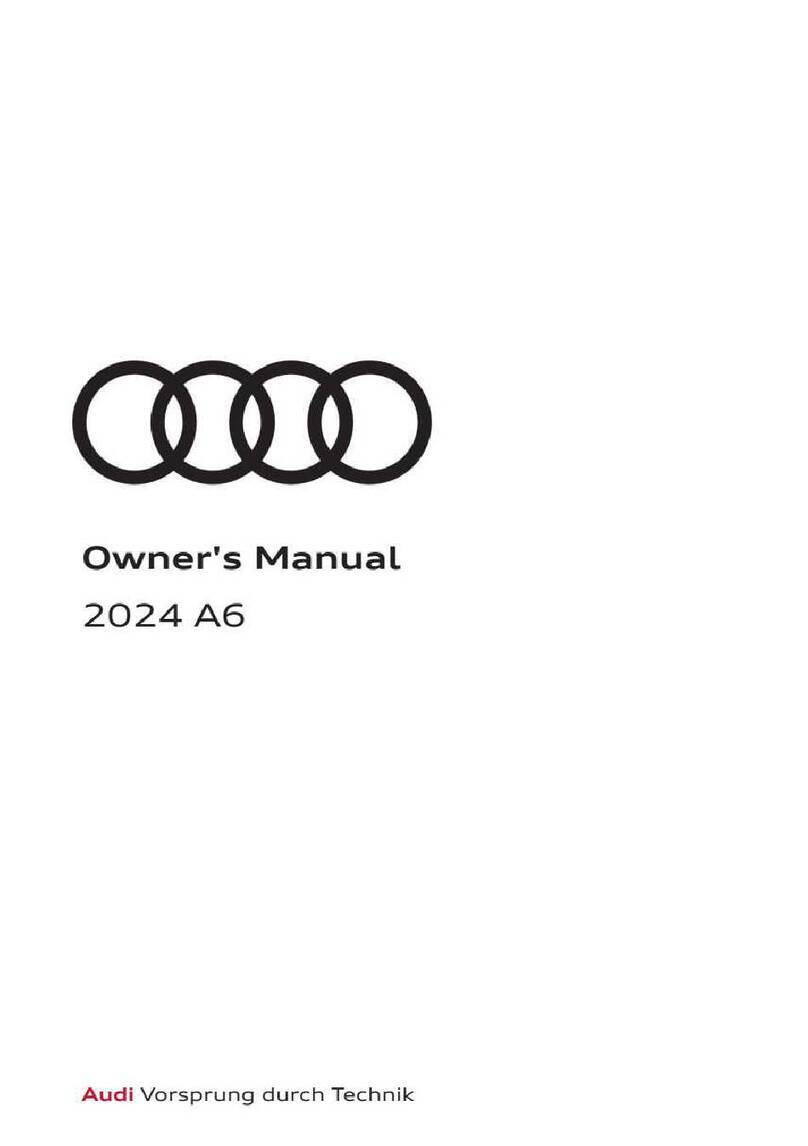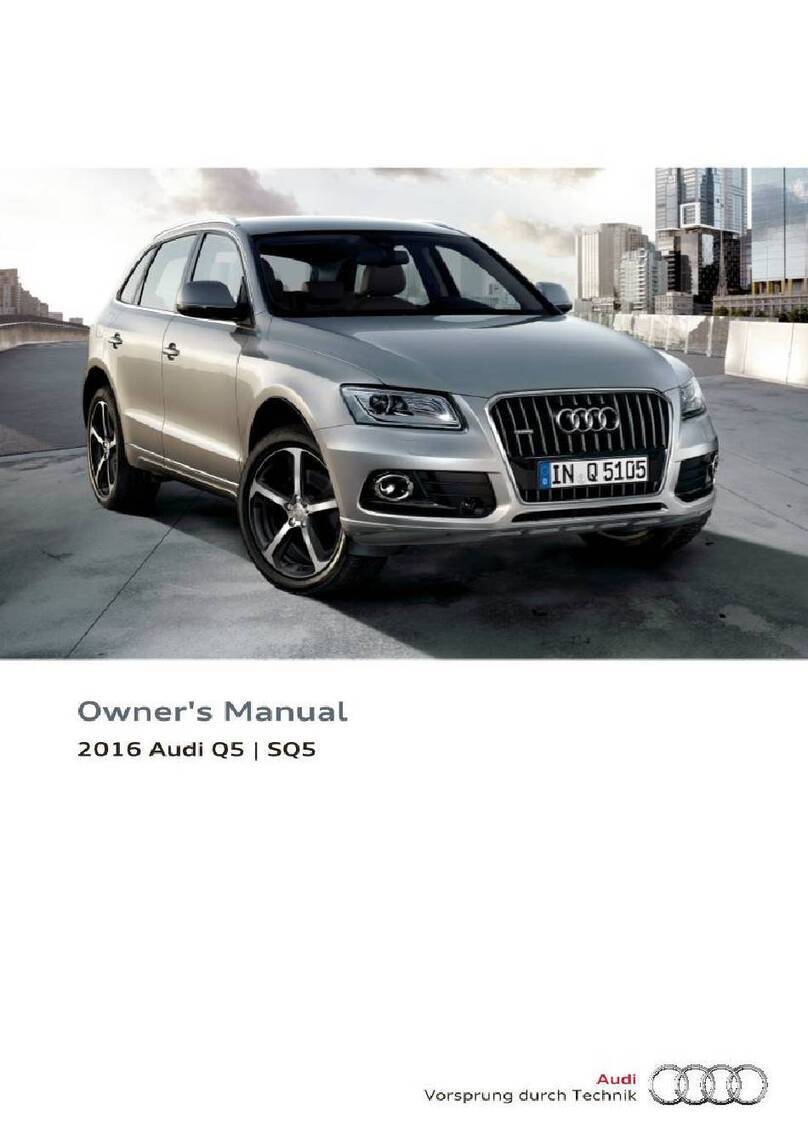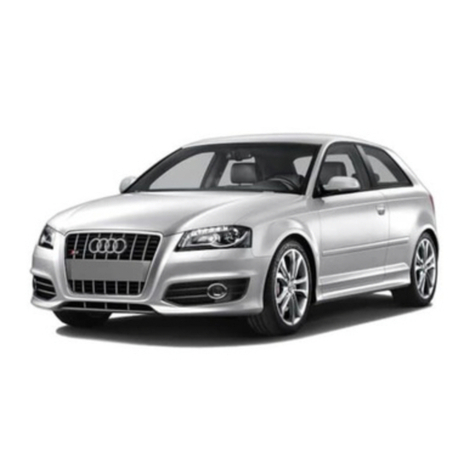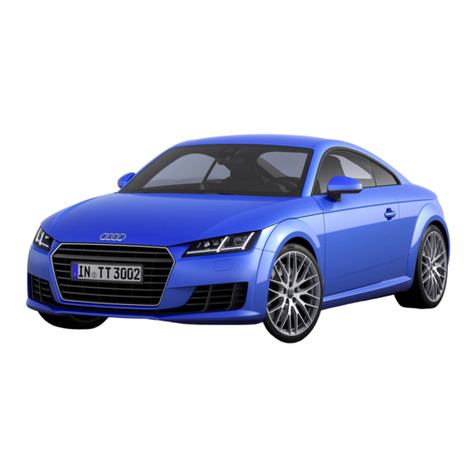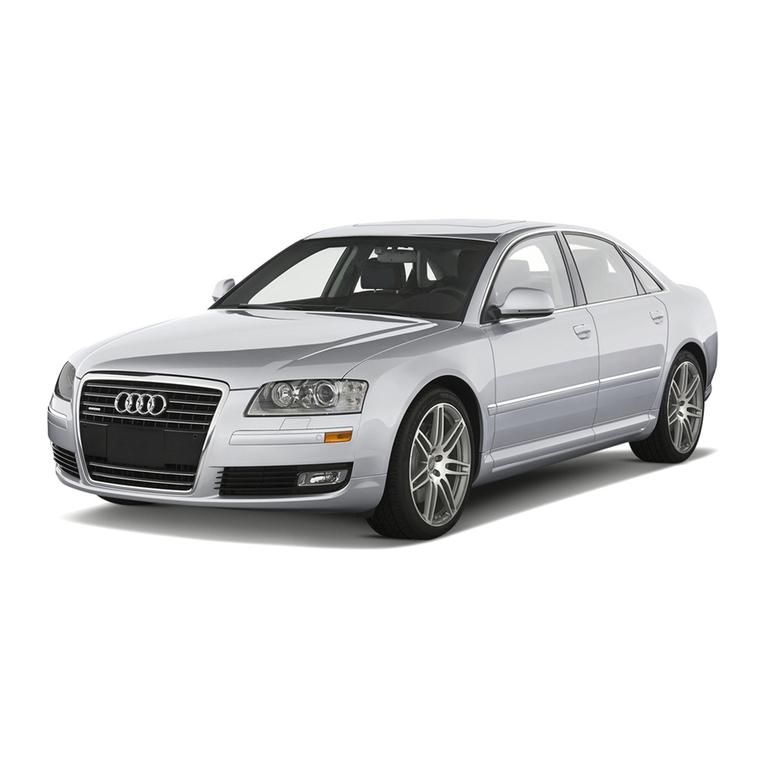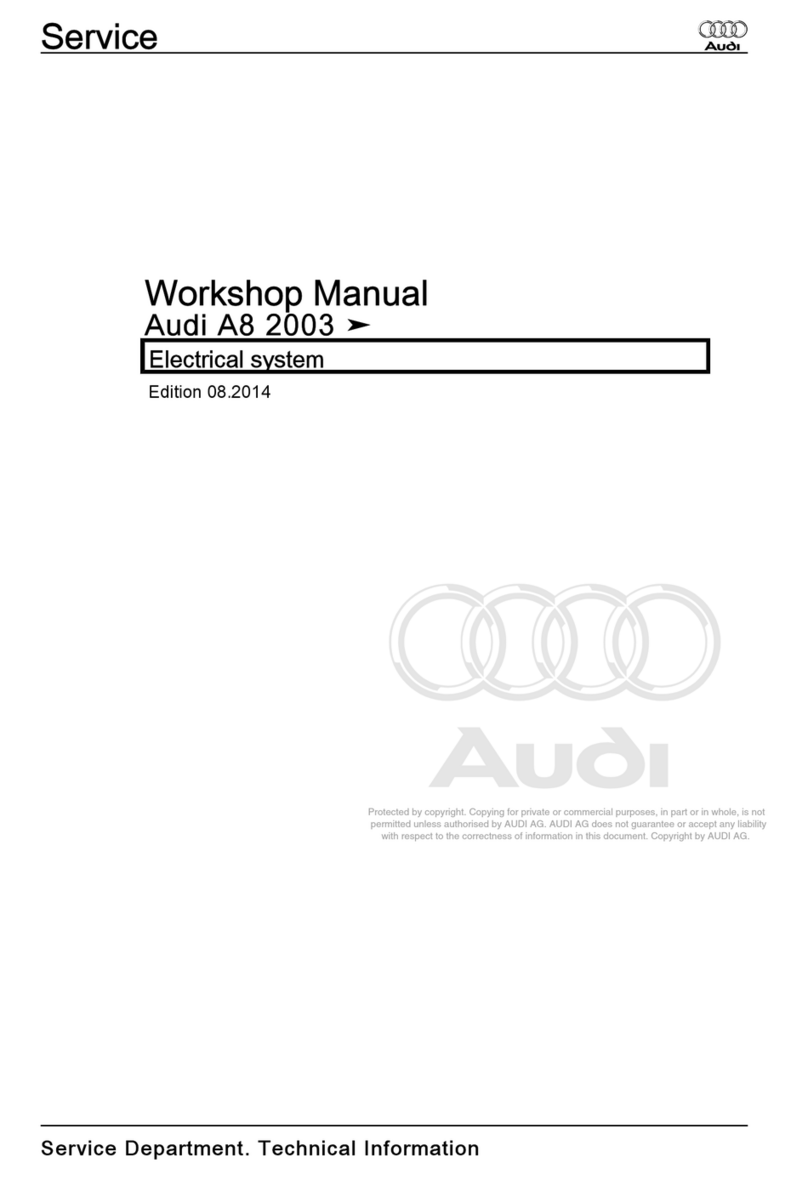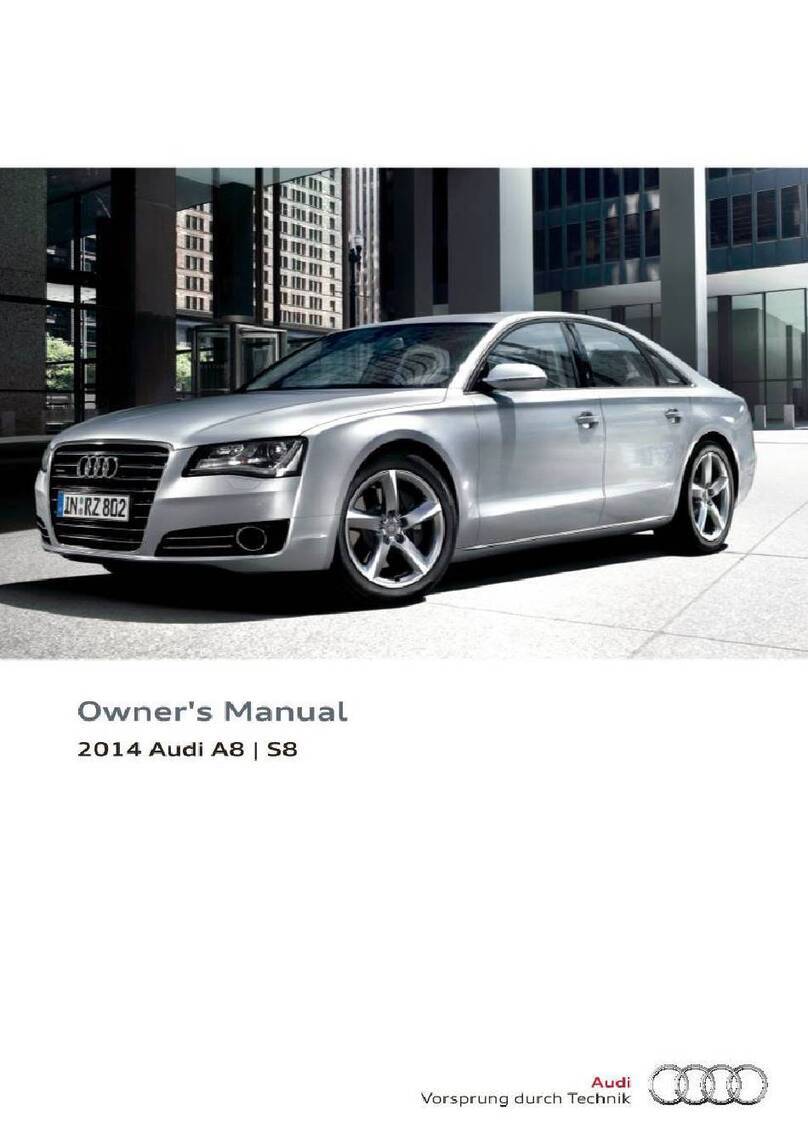
2
Overview
Engines
3.0l V6 TFSI engine with twin-scroll turbocharger
› Maximum power: 335 hp (250 kW)
› Maximum torque: 369 lb ft (500 Nm)
› 0-60 5.7 seconds
The 2019 A8 is the first Audi to be oered as a
mild hybrid.
Suspension
The front and rear axles have a precision five-link construction (dynamic all-
wheel-drive steering is optional). The sport dierential will be available in
the future only for the S8. The adaptiveairsuspension has hydraulically con-
trolled dampers which are adjustable to fourheight levels.
A fully active Audi AI active suspension will be available at a later date. It
controls each wheel separately and allows a wide range between comfort
and sportiness.
Displays and operation
A new operating and display concept incorporating
MMI touch response technology with two touch-
screens, a switch panel (optional) and an illumi-
nated button module with tactile and audible feed-
back, intelligent handwriting entry with
whole-word and multifinger recognition.
An Audivirtualcockpit with HD resolution and
optional head-up display.
Driver assistance systems
For the first time in an Audi, a central driver assis-
tance control module (zFAS) utilizes the data from
various sensors to comprehensively map the area
around the vehicle. This map is updated continu-
ously and is used by a number of assistance func-
tions including the newly optional adaptive cruise
assist. Adaptive cruise assist combines the three for-
merly independent systems of adaptive cruise
control, Audi active lane assist with “early” correc-
tive steering point, and trac jam assist. Intersec-
tion assist helps the driver in situations where
cross-trac ahead of the vehicle can only be seen
late due to impaired visibility.
Click here for additional
information about hybrid vehicles.

